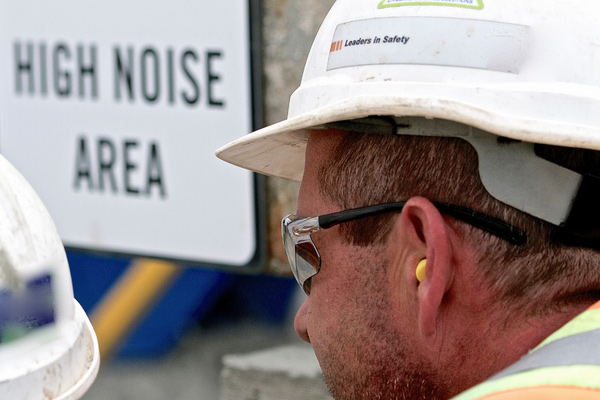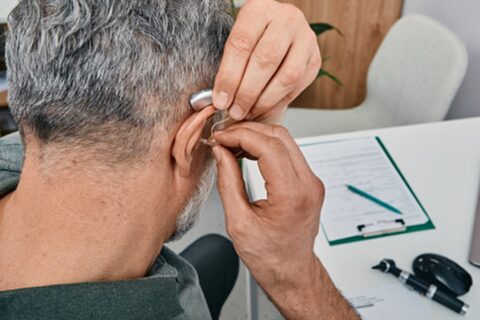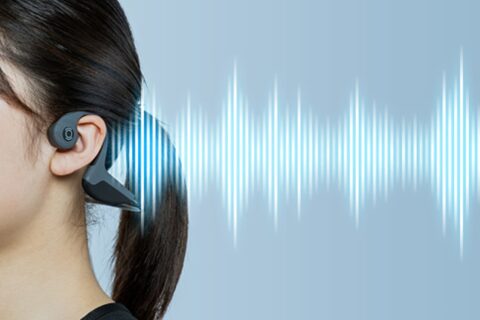Protect Your Hearing
 Always use ear protection to minimize hearing damage in high-noise environments
Always use ear protection to minimize hearing damage in high-noise environments
Understanding Hearing Loss
There are two main types of hearing loss: conductive hearing loss and sensorineural hearing loss. Conductive hearing loss occurs when sounds can’t travel from the outer ear to the eardrum and the bones of the middle ear. Conductive hearing loss isn’t always permanent, and in most cases, hearing can be improved. Sensorineural hearing loss is usually more serious and less likely to improve. Sensorineural hearing loss occurs when there is damage to tiny hair cells in the cochlear and/or the auditory nerve. Sound vibrations reach the cochlea, but damaged hair cells can’t translate the sound vibrations into the electrical signals that are transmitted to your brain.
The Effect of Noise on Hearing Loss
Age and exposure to very loud noises are two major contributors to sensorineural hearing loss. While we can’t control the natural aging process, we can control our exposure to noise. By limiting our exposure to loud noises, we can minimize the damage to the hair cells. Noise is measured in decibels (dB). Long or repeated exposure to sounds at or above 85 dB can damage the hairs that translate sound waves into sound, leading to hearing loss. Once these hairs are damaged, they can’t be fixed.
Damage can result from a single loud sound close to your ear. More often, damage occurs from exposure to various loud sounds over time. We often don’t even realize the damage is happening. You might think your hearing is safe because loud noises don’t bother you as much as they used to – however, this most likely means you’ve already lost some of your hearing.
Protect Your Hearing
Tips for reducing your exposure to loud noise and protecting your hearing include:
- Know which noises are at or above 85 dBA and limit your exposure to them. Keep reading to learn more about the noise levels of common sounds.
- Wear earplugs or other protective devices when exposed to loud noise. Keep reading to learn about various hearing protection devices.
- If you can’t reduce the noise or protect yourself from it, move away from it
- Wear over-the-ear headphones rather than earbuds. Earbuds worn directly in your ear can be up to nine dB louder than over-the-ear headphones.
- Choose noise-canceling headphones—Without the noise-canceling option, we often increase the volume on your headphones to compensate for the competing noise around you.
- Have your hearing tested on a regular basis if you are frequently exposed to loud noise
- Get treatment for ear infections, which can cause permanent damage to the ear if they’re left untreated.
Noise Levels of Common Sounds
Noise up to 85 dB is generally safe, although you should limit prolonged exposure even at these levels. For noise above 85 dB, protect your hearing by wearing earplugs, limit the time you’re exposed to the noise, and try to avoid it altogether if possible. The louder a sound is, and the longer you listen to it, the more it can damage your hearing.
- 10 dB Normal breathing
- 60 dB Normal conversation
- 70 dB Washing machine, dishwasher
- 85 dB Gas-powered lawnmowers and leaf blowers
- 95 dB Snowblower, motorcycle
- 110 dB Chainsaw, jackhammer
- 120 dB Ambulance siren
- 140 dB Fireworks, firearms
Hearing Protection Devices
Hearing protection devices help block the sound entering our ears to minimize damage to the hair cells. Depending on the level of noise and your preferences, you may consider one of these devices:
- In-ear foam plugs: These are inexpensive, convenient foam plugs that expand to fit to the shape of your ear. It’s important that you insert them properly to ensure an airtight fit: Roll the plus into a thin tube that easily fits into the ear canal, and let it expand. These types of earplugs are often available as “one size fits all.” If your ear canals are smaller or larger than average, you may want to consider a different type of device.
- Earmuffs: Earmuffs completely cover the outer ear and are held in place by a headband. They are typically adjustable, allowing for a comfortable fit. However, because they’re not placed directly in the ear canal, they usually have lower noise reduction ratings than earplugs.
When determining which ear protection is best for you, consider the device’s noise reduction rating (NRR), comfort level, and how well it fits. Your audiologist at the Florida Gulf Coast Hearing Center can help you find the right device for your situation.


